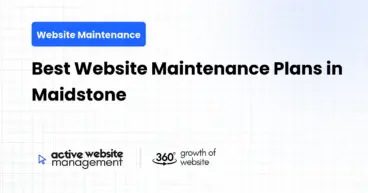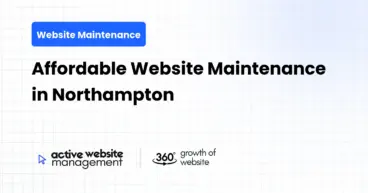December 31, 2024
9 min read
Maintaining a website is an ongoing process that requires consistent attention and effort. This is especially true for Drupal websites, which power millions of websites globally. As we enter 2025, the landscape of web development, security, and content management is constantly evolving. For Drupal website owners and administrators, keeping a website running smoothly and securely is crucial. In this article, we’ll explore the essential maintenance tasks for Drupal websites in 2025, offering practical insights on ensuring your site’s performance, security, and user experience remain top-notch.
1. Introduction: Why Drupal Website Maintenance is Essential
In 2025, the landscape of website management continues to evolve. The speed at which technology advances, the growing importance of online security, and the ever-changing demands of users make website maintenance more crucial than ever before. This is especially true for Drupal websites, which serve as a reliable platform for building and managing dynamic content-rich websites. Whether you’re running a corporate website, an e-commerce platform, or a community forum, regular website maintenance ensures your site stays secure, fast, and relevant.
Drupal is an open-source content management system (CMS), which means it requires consistent updates and optimization to perform at its best. Regular maintenance helps minimize downtime, improve performance, enhance security, and deliver a better user experience. With Drupal’s active community and regular updates, staying on top of essential tasks is easier than ever.
This article outlines the most important Drupal website maintenance tasks for 2025 and beyond. These tasks are not only essential for website owners but are also critical for developers and administrators who wish to keep Drupal websites running efficiently and securely.
2. Keep Drupal Core and Modules Updated
2.1. Updating Drupal Core
One of the most important aspects of Drupal website maintenance is ensuring that the Drupal core is always up-to-date. The core is the backbone of your Drupal site, and regular updates ensure that your website remains secure, fast, and compatible with new features and technologies. In 2025, Drupal’s community continues to release critical security patches, bug fixes, and performance enhancements for the core.
To update Drupal core:
- Backup your website before making any updates to avoid data loss.
- Use Drush (a command-line shell for Drupal) to update Drupal core more efficiently, or use the Drupal admin interface.
- Test on a staging environment before applying updates to your live site to ensure compatibility with your current theme and modules.
- Regularly check for security updates in the Drupal Security Advisories section of the official Drupal website.
Don’t Just Maintain Your Website—
Grow It using Active Website Management! Don't Wait for Growth—Accelerate It with Active Website Management
2.2. Updating Contributed and Custom Modules
Drupal relies heavily on contributed modules, and these modules need regular updates to maintain compatibility with the latest version of Drupal core. Outdated modules can introduce security vulnerabilities or cause performance issues.
- Check for module updates via the Drupal admin interface or use Composer (the PHP dependency manager) to manage module dependencies efficiently.
- Disable or uninstall any unnecessary or unused modules to improve website performance and reduce security risks.
- When updating contributed modules, always read the module release notes to check for any breaking changes or new requirements.
3. Regular Backups: A Safety Net for Your Website
3.1. How to Create and Manage Backups
Backups are essential for any website, but they are especially critical for dynamic websites like those built with Drupal. Regular backups ensure that you can quickly restore your website in case of data loss, hacking, or server failure. In 2025, backups should be automated and stored off-site for added security.
Use Drupal backup modules like Backup and Migrate or third-party services to schedule regular backups of your entire site, including:
- Database backups (to store your content, configurations, and settings).
- File system backups (to include your uploaded files and theme assets).
3.2. Best Practices for Backup Frequency
How often you should back up your site depends on your website’s content and traffic:
- For high-traffic websites, daily backups are recommended.
- For smaller websites with less frequent content updates, weekly backups may suffice.
- Store backups on a cloud service or external server to avoid potential issues with your hosting provider.
4.1. Caching Strategies for Faster Load Times
Website performance is a critical factor for user experience and SEO in 2025. Drupal offers several caching mechanisms that help improve load times by storing frequently accessed data in memory.
- Page caching: Cache entire pages for anonymous users.
- Block caching: Cache individual blocks that are displayed across multiple pages.
- Views caching: Cache database queries used in custom views.
- Reverse proxy caching: Use a content delivery network (CDN) like Cloudflare or Fastly for more efficient caching.
4.2. Image Optimization
Images play a significant role in website load times. Large, unoptimized images can slow down your website and harm SEO rankings. Use image optimization techniques, such as:
- Image compression: Use tools like ImageMagick or the Image Optimizer module for Drupal to reduce image file sizes.
- Responsive images: Use responsive image styles to serve different image sizes based on the device.
- Lazy loading: Implement lazy loading so that images load only when they enter the viewport.
4.3. Database Optimization
A bloated database can slow down your website significantly. Regularly optimize your database by:
- Removing unnecessary data such as old revisions, logs, and sessions.
- Using database optimization tools like Database Optimization or DB Maintenance module.
- Running cron jobs to clean up outdated data and improve performance.
5. Monitor and Improve Website Security
Security is a constant concern for any website, and it’s especially important for Drupal websites due to their popularity. The open-source nature of Drupal makes it an attractive target for hackers, so it’s vital to follow best practices to keep your website secure.
Don't Wait for Growth—Accelerate It with
Active Website Management Don't Wait for Growth—Accelerate It with Active Website Management
5.1. Security Updates and Patches
Always stay up-to-date with Drupal’s security releases. The community releases patches for known vulnerabilities, and applying them promptly ensures that your website remains safe from exploits.
- Subscribe to Drupal Security Advisories to receive notifications of security updates.
- Use Composer to automate the update process for core and contributed modules.
5.2. Enabling Two-Factor Authentication
With the increasing prevalence of hacking attempts, enabling two-factor authentication (2FA) is a critical step to securing your Drupal admin accounts. This adds an extra layer of protection by requiring users to provide a second authentication factor, such as a code sent to their phone, in addition to their username and password.
5.3. Implementing HTTPS
With search engines prioritizing HTTPS websites and security being a top concern in 2025, it’s crucial to implement SSL/TLS certificates across your Drupal website. Enabling HTTPS ensures encrypted communication between the user’s browser and your server, protecting sensitive data such as login credentials and payment details.
6. Conduct Regular SEO Audits
SEO (Search Engine Optimization) is crucial for driving organic traffic to your website. A regular SEO audit helps identify areas for improvement and ensures that your site is following the latest SEO best practices.
6.1. Content Optimization for Search Engines
Update your content regularly and ensure that it’s optimized for both users and search engines. Use the following practices:
- Keyword research: Target relevant keywords and phrases to rank for.
- Meta tags and descriptions: Ensure that each page has a unique and compelling meta title and description.
- Internal linking: Use internal links to help users navigate your website and improve SEO.
6.2. Mobile-First Indexing
With Google moving to mobile-first indexing, it’s crucial to ensure that your Drupal website is mobile-friendly. Use responsive themes to ensure that your site adapts to different screen sizes and devices.
6.3. Using Drupal SEO Modules
Drupal offers several SEO modules that can help improve your site’s search engine rankings, such as:
- Metatag: Automatically generates meta tags for your site.
- XML Sitemap: Helps search engines index your site more effectively.
- Redirect: Ensures proper redirection of outdated URLs to maintain SEO value.
7. Keep Your Content Fresh and Engaging
7.1. Content Review and Updates
Outdated content can harm your website’s user experience and SEO performance. Make it a habit to review your content regularly and update it as needed.
7.2. Content Archiving Strategies
Content archiving helps maintain the relevance of your website without cluttering it with old content. Archive outdated content that no longer serves your users, but retain it in case it needs to be revisited or repurposed in the future.
8. User Experience and Accessibility Enhancements
8.1. Accessibility Best Practices for 2025
Web accessibility is crucial for ensuring that your website is usable by everyone, including individuals with disabilities. Follow the WCAG guidelines to make your site more accessible in 2025.
- Alt text for images.
- Keyboard navigation for interactive elements.
- Semantic HTML for better screen reader compatibility.
8.2. User Testing and Feedback
Regularly conduct user testing to identify areas where the user experience can be improved. Gather feedback through surveys or analytics tools like Google Analytics to understand how users interact with your site.
9. Active Website Management: A Continuous Approach
9.1. Monitoring Website Traffic and User Behavior
An active website management strategy involves regularly monitoring website performance and user behavior to ensure that everything runs smoothly. Tools like Google Analytics and Drupal’s built-in statistics module can help track user interactions and identify potential issues.
Use tools like Pingdom or New Relic to monitor website uptime, page speed, and server health. These tools help you identify performance bottlenecks and troubleshoot issues before they affect your users.
9.3. Regular Website Audits
Conduct regular audits to assess your website’s security, performance, content, and SEO health. These audits will help you stay on top of issues and identify opportunities for improvement.
10. Conclusion: The Importance of Ongoing Maintenance for Drupal Websites
In 2025, maintaining a Drupal website requires ongoing attention and effort. By following these essential maintenance tasks, you can ensure that your website remains secure, fast, and user-friendly. Regular updates, backups, performance optimization, and security measures will help you stay ahead of potential issues and keep your website running smoothly.
Remember, website maintenance isn’t a one-time task—it’s a continuous process that requires vigilance and proactive management. With the right tools and practices, you can ensure that your Drupal website thrives well into the future.






